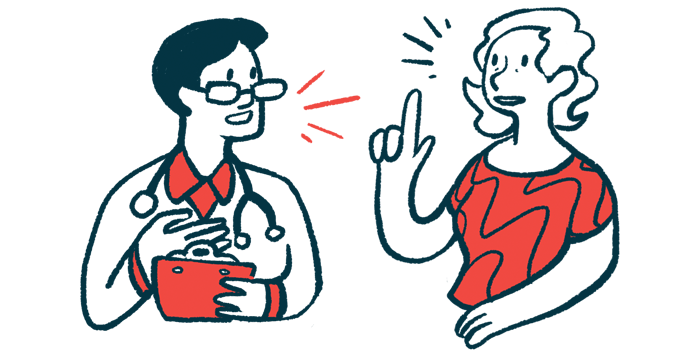Adults, teens with spinal muscular atrophy feel intermittent pain
People with more depressive symptoms tended to experience more pain

Most adults and adolescents with spinal muscular atrophy (SMA) experience intermittent pain, with more than half having pain episodes at least once a week, a study reports.
This pain was generally mild to moderate and affected the hips or spine. People with more depressive symptoms tended to have more pain, but pain intensity didn’t correlate with disease severity.
“These findings support the importance of assessing pain frequency and strength to initiate and adjust patient-centered pain therapy,” the study’s researchers wrote. The study, “Pain in adult and adolescent patients with 5q-associated Spinal Muscular Atrophy – an often underrated phenomenon,” was published in the Journal of Neuromuscular Diseases.
In SMA, progressive muscle weakness and atrophy lead to symptoms such as difficulty with movement, speech, and swallowing.
The condition is caused by mutations in the SMN1 gene, which result in a deficiency of the survival motor neuron (SMN) protein that’s essential for the health and function of motor neurons, or nerve cells, that control voluntary muscle movement.
Depending when symptoms appear, SMA cases are categorized into different disease types, ranging from type 0, where symptoms are present before birth, to type 4, when they don’t emerge until adulthood.
Pain is often a symptom in neuromuscular diseases, but few studies have investigated pain in SMA, said the researchers. “The cause of the pain or the correlation of the pain with clinical characteristics or functional status has so far remained unclear,” they wrote.
Most SMA patients experience pain
The research team interviewed 70 participants with SMA about their experiences with pain to study that correlation. All had genetic testing that confirmed SMA and all but two were receiving regular treatment with a disease-modifying therapy at Ulm University Hospital in Germany during the trial. Their median age was 30 and, while most were adults, there were some adolescents too. Every SMA type except type 0 was represented.
The researchers “found an intermittent frequency of pain in 80% of adult and adolescent SMA patients with more than half of the patients experiencing pain at least once a week.” Most participants who had pain rated it as light or moderate (74%) and half treated it with medications or other substances, such as medicinal cannabis.
Pain intensity, a metric that combines severity and frequency of pain, didn’t correlate with age and gender. It also didn’t differ significantly between SMA types. “This may imply that other factors than SMA type or physical function may play a role in the subjective experience of pain intensity,” wrote the researchers, who also asked the participants about symptoms of depression. More than three-quarters didn’t have clinical depression, but the remainder was split between milder and more severe symptoms.
Depression scores correlated with age, such that older people had more depressive symptoms. People with SMA types 3 and 4 reported more pain than those with types 1 and 2. However, when age was taken into account, this difference in pain levels between the groups was no longer seen.
Participants with greater pain intensity also had higher levels of depression, but the researchers weren’t able to assess cause and effect in this relationship. It’s possible that pain causes depressive symptoms or that people experiencing depression are more likely to report pain, or some combination of these.
In general, the participants reported good quality of life and having pain wasn’t associated with it being significantly worse. Depression and older age both correlated with poorer quality of life.
Some relationships may not appear to be significant because of the limited number of participants, the researchers said. Also, most participants had SMA type 2 or 3, so the results may not reflect other types.
With most participants reporting intermittent pain, the researchers emphasized the importance of conversations about pain management in SMA, particularly in those with more depressive symptoms. “Appropriate treatment of pain in addition to appropriate antidepressant medication in this subgroup, if necessary, should be an integral part of comprehensive treatment in SMA,” they wrote.








